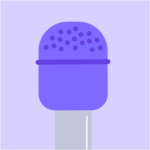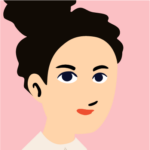Build your co-design agenda



Let’s draft a codesign agenda.
Well, you see, it is never only one. You have one agenda shared with the participants and used for communication purposes to partners or other involved stakeholders. As a facilitator, you need a far more detailed co-design agenda that will be worked on internally.
These two agenda are just a way to confirm that every co-design process is going to try to drive you nuts 🙂 Again, by design, it’s meant to be that way. Do not patronize people. Do not make false promises. Do not fear challenging your co-designers on the depth or superficiality, and the depth, on the absurdness, on the brilliance of their ideas. Be honest. If you’re not honest in the co-design process, what you will do is you will simply run another multi-stakeholder process. Your job is not to appease anyone in the co-design process. Your job as a facilitator is to get to the best, most effective and the product with the greatest level of efficacy. That’s your purpose in co-design. And you’re coming into the design not as a neutral operator. You’re coming in with your ideas. Right. And so, you’re running this thing like your life depends on it, but understand that you’re going to get challenged on it and so you have to be ready to challenge back. And so, that is something that you have to keep in mind.

That said, in order for the process to work, in terms of challenges, there has to be structure to it. So this is not a, ‘Yes, co-design can be chaotic,’ but it’s organised and rhymed and reasoned chaos. And so, part of what I talk about in stripping away power and taking power or process is to actually do it around the structure, the agreed-to parameters of definition and time and speed. Let me finish that thought, if you don’t do that, what will occur is you will find yourself in a perpetual cycle of having the same conversation over and over again, because especially in civil society, there’s no shortage of anyone or someone wanting to challenge the very last idea they heard. And when that occurs, it’s just a constant, perpetual, unfun cycle.
Q3:
The one last thing on this is, if you do not use either time or ideation – the limitations – as ways of structuring co-design, you will be there for weeks and weeks. There has to be objective and purpose. This isn’t an academic exercise. Co-design is a pragmatic process that is underpinned by empathy and that’s underpinned by purpose.

Build your facilitators’ agenda


A very important step in building your codesign agenda is understanding the objective of your co-design. As we already know, one of the great strengths of Design Thinking is that that it recognises there are many different ways to solve complex problems. DT enables you to generate lots of ideas, to choose the best and then test and iterate. It is important to mention that codesign can be used for developing new services, initiatives, project activities but also something as broad and long-term as a strategy.
Let’s get practical!
There can be a big difference between theory and practice. In I4C, we have tested a variety of formats, to reach different objectives. To help you do that, we have developed a short questionnaire that will guide you through the first step of agenda building, and help you choose the best format for your codesign.
Now we will focus on tips and advice for running your first pro
GETTING STARTED
We’ve seen how individual tools, or whole Design Thinking steps could be immediately used in our daily work. There’s also a great short flow that combines Empathy and Sensemaking in the Guidebook. For this chapter we’re going to look in more detail about how to shape a full DT cycle.
 Additional reading tip:
Additional reading tip:
Ideally we work with a multidisciplinary, diverse team of participants. This is an opportunity to get stakeholders to radically collaborate and create novel solutions. So we start with the challenge, to then understand who we need to bring together.
Is it a complex Social Change or an Organisational Change challenge? External or internal stakeholders or both?
- Who is affected, who can help, what skills are needed?
- How can they take part? Whole process, some sessions only?
- How and what are they connecting with? Device, data needs
- Languages and multi-lingual needs
COMMITMENT AND RESOURCES
- Buy-in from your team, your ED
- How to align with your existing planning approaches: stand alone project or integrated into annual planning
- Budget to run the project and implement solutions
- Facilitation team
- Preferably 10-14 people with adequate time to co-create new solutions
- Space / online tools / comms tools
TIME
You will need at least 2 weeks to run a full DT process to get to a minimum viable solution, even if you are running a rapid workshop to accelerate the process.
FACILITATION
Two people minimum
DESK RESEARCH & PARTICIPANT SURVEYS
What desk research do you need to do? Existing research on the challenge; existing solutions / programmes; possible solutions?
Participants – who do you need to survey and how? What do you need to know?
HOW TO ENSURE PARTICIPATION BY PEOPLE AFFECTED BY THE CHALLENGE
- Can you invite a key set of these stakeholder groups to the process?
- Alternatively, are you able to invite representatives of these stakeholder groups?
- Will the research process allow for access to these key stakeholders through a variety of research channels?
Examples of a detailed, one-day codesign agenda:
 One-day codesign session
One-day codesign session
Formats
Again…….
- Who is affected, who can help, what skills are needed?
- How can they take part? Whole process, some sessions only?
- How and what are they connecting with? Device, data needs
- Languages and multi-lingual needs
OPTIONS
Face to face
- Full days possible
- A space for the days you need
- Security: physical; surveillance; removal of materials overnight between sessions
- Equipment: projector(s); power supply; flipcharts; sticky notes; marker pens; materials to build prototypes with; music
Online
- Generally 3 hrs max per session
- Internet connectivity of participants
- Tech tools:
- Whiteboard – Miro, Mural
- Meeting host – Zoom; Jitsi; Bluejeans
- Messaging
- Onboarding to Zoom, Miro etc essential
- Devices – laptops needed if using Miro boards we’ve created
- Session Miro Boards – good news, we’ve created these for you to use!
Hybrid
- All of the above plus……..
- More facilitators needed
- Careful design and facilitation needed to ensure participation of all participants in key sessions and at key decision points including:
· framing vision,
· deciding on How Might We statements,
· sharing of ideas during Ideate and Prototype
- Curation needed to ensure flow of information between off and online groups
Last point: How to build your agenda?
Check out the agenda building tool ready for you on Miro
 See Board
See Board
Facilitator meetings + involvement of other organizers



Facilitation plays a major role in codesign. We have learned that quality facilitation leads to down-to-earth solutions and in the context of civil society, leads to long-term solutions. In codesigns where we feel the facilitation made a positive difference, four conditions were met: 1. Being Present 2. Participating and practicing conversations when needed 3. Hosting people 4. Co-creating with active listening. These four principles are very close to the “art of hosting” methodology, known in the social change sector. What do these four principles mean?
- Being present means showing up, undistracted, prepared, clear about the need and what your personal contribution can be. It allows you to check in with yourself and develop the personal practice of curiosity about the outcomes of any codesign. Presence means making space to devote a dedicated time to working with others. If you are distracted, called out or otherwise located in many different places, you cannot be present in one. For meetings to have deep results, every person in the room should be fully present. Collectively, it is good practice to become present together as a meeting begins.
- Codesign is a practice that depends a lot on timeline and flow. Equally important though is to not forget that conversation is an art, and it is equally important as the codesign process. Conversation demands that we listen carefully to one another and that we offer what we can in the service of the whole. Curiosity and judgement cannot live together in the same space. If we are judging what we are hearing, we cannot be curious about the outcome, and if we have called a meeting because we are uncertain of the way forward, being open is a key skill and capacity. Only by practising skilful conversation can we find our best solutions together.
- Hosting people is both more and less than facilitating. It means taking responsibility for creating and holding the container in which a group of people can do their best work together. If there is no need to meet, don’t meet. If there is a need get clear on the need and prepare a process that will meet that need by asking a powerful question. And always know how you will harvest and what will be done with that harvest, to ensure that results are sustainable and the effort was worth it. Hosting people takes courage and it takes a bit of certainty and faith in your participants.
- Codesign invites facilitators to show up without being a spectator, and contributing to the collective effort to sustain results. The best conversations arise when we listen for what is in the middle, what is arising out of the centre of our collaboration. It is not about the balancing of individual agendas, it is about finding out what is new. And when that is discovered work unfolds beautifully when everyone is clear about what they can contribute to the work. This is how results become sustainable over time – they fall into the network of relationships that arise from a good conversation, from friends working together.
Having in mind these four observed elements, take the time to read them, digest them and personalize them. We are sure your experience will be different and richer. Ensure that your experiences are captured, discussed and built upon with every new codesign. In every facilitators’ meeting, take time to discuss and reflect on them – it’s absolutely worth it!
Few more tips from our co-designers:
- Facilitate and don’t participate. Co-design is all about the people you’re bringing together doing the work together. Your job is to create a great conducive safe space for people to do their work in and then help guide the process so that people get the outcomes that they want to from the process they’re running. Sometimes you may have the knowledge about the issue that people are working on, but it’s actually your job to make sure that the people in the room do that work. Sometimes people might ask you to jump in to a conversation with some piece of technical knowledge and that’s okay as long as you very explicitly acknowledge that that’s what you’re doing: ‘I’m taking a facilitator’s hat off by request I’m putting on the participant’s hat.’ But really that should be occasional for facilitators in co-design processes.”
- Two people facilitation – It’s impossible to run design thinking and co-design sessions as one person. It’s tough work and it’s much better to work together with a co-facilitator. Two people can see what’s going on in the group, can make sure that participants are engaging, if there’s a problem with somebody and they’re not quite present in the room you’ve got a chance to help and find out and help make sure that group dynamic works through what can be quite an intensive process over one or more workshops. It’s really important to have the opportunity to pre-brief together, so prepare before the meeting each day, and then de-brief. Because as you run a session you might see something that’s working or not working and if you’ve got two people it’s great to bounce ideas off for how to improve what you’ve done in the last session and make things better for the next session.”
- “I think the other big challenge that facilitators face is creating a safe space for people to try things on, to try to innovate so if we have this privilege of bringing people together with these wonderful different experiences, and in that is there’s power of diversity to spark new ideas, to think differently, to innovate and solve the challenges that we’re working on together. It means getting the balance right within a safe space for people who are comfortable and respected. But we also need to try and disrupt things a little bit, so that sometimes people are going to feel a little bit uncomfortable because we’re by designing getting out of our comfort zones and out of our echo chambers to think a bit differently and spark some new ideas. So striking that balance is sometimes a challenge for facilitators.”

Q2
You know, thinking like that, so I think doing some research and being really thoughtful about how you convene I think is really important. Acknowledging yourself in that space and your role and being really crystal clear on that, I think is something every facilitator should be aware of and think about. Understanding how you come across and who you look like and who you are and being authentic as possible I think really adds to the way that other participants can turn up in that space. If you’re super authentic they will also be super authentic, and I think that’s really powerful and creates great outcomes.
Q2
And, what else, a facilitator should know, I guess I’ve covered some of the other big things around language and venue and culture and things like that, but I guess they should always know that when you’re facilitating your job is to create a space and to be really crystal on that. It’s a huge gift to be able to do that and to bring these people together. And so I guess to have optimism and hope and probably like a double espresso in the morning wouldn’t go amiss because it’s going to be pretty tough. You’re going to have a variety of things to deal with, but you are creating a space that could have an amazing impact on a specific issue, on a specific person, on a specific context, so I guess every facilitator should remember when they wake up and you’re like, ‘Well, this could be amazing.’ You don’t know if this is the day that something could turn into something as big as I4C. You don’t know if this is going to be the next global social enterprise. You literally don’t know what could come out of it. So I guess being a bit curious and a bit optimistic, even though sometimes it’s a bit hard to wrangle 50 people productively for a day.
Finalize all event materials
Usually your list of materials for a codesign will include:
- Detailed facilitators agenda (for internal use only)
- Participant’s agenda
- Slides / PPT
- Online whiteboard (Mural, Miro, Jamboard, etc)
- Offline: sticky notes, flipcharts and a lot of colourful markers (make sure to use materials responsibly and recycle them!)
For more details on a “supply list” for your next codesign, you can also use the following extended list:
- Projector & Connectors (make sure you have all the appropriate laptop-to-projector connectors)
- Tape
- Yarn
- Sharpies
- Dot stickers
- Snacks!
Content on power relationships in co-design/design thinking



Q1
So co-design, in the context of the I4C initiative, the Innovation for Change initiative and then beyond, I’ve been involved in other things in civil society where we’ve used co-design, and I’m going to say the unpopular truth about this. I mean, unpopular because we all tend to think that in civil society, we’re all in it together. But, in reality, the harsh inequities of culture, societal, economic, social, gender, everything, all of those inequities that are now commonplace in our collective conversations and rhetoric, bubble up to surface so quickly in co-design that it did catch us off guard.
Q1
So when you run a co-designed programme, or you’re running a co-design process, you’re essentially using language and using concepts of both, you know, from a sort of subjective perspective, disempowerment. Right. So you’re disempowering yourself as a facilitator. And, empowerment. You’re empowering the participant in the process to own whatever the process, the journey, the product. Even the language that I could just use with you is still marked by one person owning power and giving it away and another person not having it and being given power. Right. When you get into a process like this, you have to be ready. Because once you’re in the moment, you’ve already started using language that references co-ownership. It references co-thought leadership. It references a sort of equalisation of positions in the process. It references, or it connotes, moving from, say, lectern and at lecture hall to a round table with no corners and everyone has the same microphone, right. And so when you do that, and you enter the room or you enter the process, you better be ready to be challenged on your power constantly.

Q1
But for me, that’s really the crux of human-centred design and design thinking is having that strong user perspective, making sure that the person who is going to be living or benefiting from the programme, the idea, the initiative, the technology is included and for me, I think it’s particularly powerful in a civil society context or development context because of the entrenched power dynamics and the fact that, historically, voices from the Global South, voices from human rights activists, voices of women, voices of people of colour have been suppressed, ignored, oppressed. So if you completely reverse your entire methodology and you facilitate listening properly, you can actually understand the root causes and reframe a problem and then actually perhaps design something that’s actually addressing the real problem.
Q1
Co-design for me is slightly different in the fact that it takes lots of the same elements. But, for me, it’s that diversity of participants and flattening those power dynamics within the space. So the reason why our workshops for what would become Innovation for Change were called co-design is because we had donors in the room. It was trying to bridge that gap between ‘this is what civil society does’ and ‘these are the people who fund us,’ because often those white men stuck in a cold room in D.C., do you have expertise and they do have knowledge that they can share. And they also understand how funding models work and they know how their funding models work and they know what their organisation wants to fund. So there’s still an amazing resource to be used. But putting people in the same level playing field and facilitating a space where they can work together and collaborate and design a programme together, with donors and activists and social entrepreneurs and NGO employees, I think for me was really, really powerful. And I think we could deliver more in different aspects of civil society because I think that would bridge the gap between the us and them, the funded and the funder, and also allows people who do still have expertise, it’s relevant to share that in a way that is less top-down and more equal, not equitable, but it’s better than it could be.
Q1
So apart from challenging everything you know about yourself and your own culture and what you’re projecting and what space you’re creating, as a facilitator you have an immense amount of power. And, as somebody from the Global North, in a development or an INGO context, you have a lot of power. So, being aware of those power dynamics and being, I guess, strategic in how you’re creating the space and thoughtful is super important. And that’s a really big challenge and can’t be stressed enough.

